Casualty Quarterly, Summer 2024
 |
|
Summer 2024
Vol. 8 | No. 3 |
New Homeowners’ Insurance Task Force Outlines Key Issues, Seeks Volunteers
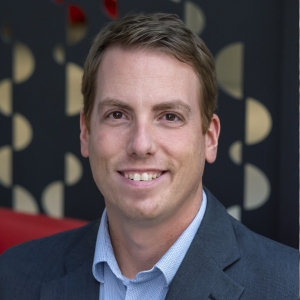
Doss 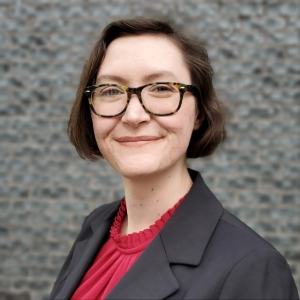
CasehartThe Casualty Practice Council’s (CPC) new Homeowners’ Insurance Task Force will look at a variety of public policy issues related to homeowners’ insurance. The task force is looking for volunteers—if interested in joining as a founding member, please fill out the volunteer contact form. (Please make sure to note you are interested in joining this task force. Learn more about volunteering at the Academy’s free Volunteer Information Session webinar on Aug. 6—register here.)
The task force is charged with providing an actuarial viewpoint on homeowners’ insurance public policy issues, including but not limited to availability and affordability concerns in many states—including Florida, California, and others—that are disproportionately affected by extreme events such as hurricanes and wildfires.
Casualty Quarterly asked Chairperson Ken Doss and Vice Chairperson Emma Casehart about some of the new task force’s plans and goals.
What are some of the key issues facing the new task force?
At a time when catastrophic events are becoming more prevalent, people continue building and buying homes closer to where these events most frequently occur. This has contributed to concerns with the affordability and availability of homeowners’ insurance in many markets. The task force, in connection with the Casualty Practice Council’s P/C Extreme Events Committee, will consider major drivers of availability and affordability concerns and potential remedies. Current markets will be used as case studies into how they became stressed, and what actions can be taken to enhance availability and affordability for customers. Research will include several perspectives:
- What are major drivers of increased losses, and are some of those drivers unrelated to increased risk (e.g., fraud)?
- How can risk mitigation measures, and enhanced education around these opportunities, improve availability and affordability?
- How has regulatory/legislative action influenced the situation, and what tactics can be leveraged to enhance availability and affordability?
- In what ways can homeowners be educated about the issues and informed in how their decisions can influence the situation?
With this summer’s record heat, how important are climate-related issues for homeowners’ insurance?
The task force will focus on climate issues as they relate to availability and affordability for homeowners. Those issues are interrelated with work by the Academy’s Climate Change Joint Committee, which published the recent issue paper Climatic Events, Inequities, and Risk Mitigation, and the Extreme Events Committee. A home itself may be more affordable in a high-risk area for a first-time homebuyer, but it has hidden costs of high insurance premiums, time to rebuild a home, and the stress of losing cherished possessions in a disaster. Insurance may not even be available in certain areas, leaving Americans scrambling to find coverage to protect what is often their largest financial investment. The task force will focus on how changes in climate lead to changes in insured events, with a focus on the financial system and tools that individuals and public policymakers can use to improve their resilience.
California in particular has been in the news because of regulatory issues affecting homeowners’ insurance. Generally speaking, are these issues ongoing or are they becoming more resolved?
California is an ever-evolving market and will be an impactful case study for the task force in analyzing what has caused issues of availability and affordability in the state. California’s unique environment and path to get here will provide ample opportunity to learn and inform the work of the task force. While it is too soon to say whether issues are resolved, there have been positive developments that can help with availability challenges in the state. Other areas of the Academy have engaged in this discussion, including the Extreme Events and Property Lines Committee, which sent a comment letter on catastrophe modeling to the California Department of Insurance in April, and updated a wildfire issue paper in 2022 that was originally released on 2019.
What types of deliverables is the task force planning?
The ultimate form of the deliverables will be determined by the membership of the committee, though the learnings and solutions developed by the group can be shared in a number of actuarial forums, including webinars, issue briefs, or articles in Contingencies. The task force may have opportunities to also present deliveries in regulatory/legislative forums like NAIC [the National Association of Insurance Commissioners] or NCOIL [the National Council of Insurance Legislators].
Given ongoing public policy discussions, how does the issue of the affordability of housing—both as a matter of people buying first homes and the ongoing costs of home ownership—fit into these considerations, given that both title insurance and homeowners’ policies are in the mix in those discussions?
Homeowners’ insurance exists only when home ownership exists. If home ownership is affordable only in areas with more risk to the property, that affordability of the property may lead to higher financial costs in the form of higher insurance risk, lack of market value appreciation, or difficulty selling the property in the future as the risk profile of the area shifts. The Homeowners’ Insurance Task Force will focus on the risks posed to properties across the United States from many perils and how the insurance industry and policymakers can respond to these risks.
While wildfire is an ongoing major risk, both tropical and convective storms—including hail—cause more damage than wildfires. How do these factors fit into the homeowners’ insurance mix?
As many industry professionals know, severe convective storms have been a growing topic of conversation for a number of years. These storms often produce straight-line winds and hail that damage roofs. This traditional secondary peril is being elevated to the status of a major peril for many insurers, causing significant damage potentially on par with that of hurricanes. The task force is committed to work with the Extreme Events Committee and the Climate Change Joint Committee as needed to publicize how severe convective storms affect insurance availability and affordability, and policy options that can improve building and community resilience to these storms.
Given that we are publishing at the height of the summer, some of this is focused on the perils related to hot weather. But homeowners face perils year-round—are there seasonal variations in claims and will you be looking into a resource guide for homeowners looking to prepare for the most likely eventualities?
The task force will plan to research various reasons homeowners incur claims and any variation that occurs throughout the year. One important goal of the task force is to provide information to better educate homeowners. This includes not only preparation for potential losses, but how their decisions impact potential future losses and the premiums they pay for coverage.
Susan Kent Nominated to Be Next Casualty VP
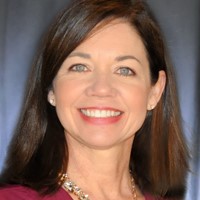
KentSusan Kent was nominated to be casualty vice president, succeeding Amy Angell. Kent became chairperson of the P/C Committee on Equity and Fairness late last year and has served on the committee since 2022, testifying in several public forums including most recently in the District of Columbia. She also offered a Q&A on P/C bias issues in the Spring 2023 Casualty Quarterly.
“I am honored to be nominated for casualty vice president,” Kent said. “Over the past several years, I have greatly valued the opportunity to collaborate with numerous volunteers and Academy staff. As we face a range of challenges in property and casualty insurance, I am eager to continue working with the Casualty Practice Council and our various committees to address these issues and new opportunities.”
The Academy’s leadership transition will occur in mid-November this year, as the annual meeting will be held earlier, in mid-October.
VP Amy Angell Recognized as Influential Woman in Insurance Industry
Casualty Vice President Amy Angell was recognized by Captive International magazine as one of the most influential women in captive insurance. In a Q&A, Angell discusses how she got started in the actuarial profession, her inspiration, and some of the gender-specific challenges—and solutions—for women in the industry.
Early Discounts End Aug. 2 for September’s CLRS
Sponsored jointly by the Academy and the Casualty Actuarial Society, the annual Casualty Loss Reserve Seminar (CLRS) offers highly interactive sessions to help P/C actuaries stay fresh on relevant topics, maintain credentials, and grow their network.
Academy Senior Casualty Fellow Rich Gibson, who is involved with CLRS planning, calls the event “one of the best continuing education opportunities for reserving actuaries,” noting its intensive workshops and general sessions on leadership, international capital standards, and technology in reserving, with nearly 50 concurrent sessions and eight roundtable discussions.
“It’s a great opportunity to network with other Academy and COPLFR [Committee on Property and Liability Financial Reporting] members,” Gibson said.
The event will also include featured speaker Ryan Gottfredson, a leadership development author, researcher, and consultant who helps organizations develop leaders primarily through a focus on mindsets. Gottfredson is the bestselling author of Success Mindsets: The Key to Unlocking Greater Success in Your Life, Work, & Leadership and The Elevated Leader: Leveling Up Your Leadership Through Vertical Development, and is also a leadership professor at the College of Business and Economics at California State University—Fullerton. He will speak in a Sept. 9 session that will be livestreamed.
CLRS will be held Sept. 9 to 11 in San Francisco, with a livestream option. Early registration discounts end Friday, Aug. 2—register today.
Register for the Academy’s P/C Opinion Seminar, Coming to New Orleans in December
Early-bird discounts are available for the annual Seminar on Effective P/C Loss Reserve Opinions, Dec. 9–10 in New Orleans.
Called by one past attendee “a great distillation of changing requirements and rules, as well as a good pooling of experience,” the seminar is designed for P/C actuaries who prepare NAIC statements of actuarial opinion.
Check out the agenda, which includes sessions on reserve ranges, “when things go awry,” and an optional Day 2 workshop on ASOP No. 36, Statements of Actuarial Opinion Regarding Property/Casualty Loss, Loss Adjustment Expense, or Other Reserves. Register today.
The Academy is accepting names of members interested in serving as an Actuarial Standards Board (ASB) property/casualty member. There will be a need to fill one position with a volunteer from the P/C area for a three-year term beginning Jan. 1, 2025. If you are interested in being considered, please review the ASB selection criteria and complete the survey here. Nominations are due by Aug. 26.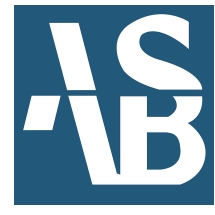
ASB Approves ASOP No. 30 Exposure Draft
The ASB approved an exposure draft of a proposed revision of Actuarial Standard of Practice (ASOP) No. 30, now titled Profit Margins and Contingency Provisions in Property/Casualty Risk Transfer and Risk Retention. Changes from the existing standard include broadening the scope from estimating capital cost, and evaluating underwriting profit and contingency provisions. The proposed revision allows ASOP No. 53, Estimating Future Costs for Prospective Property/Casualty Risk Transfer and Risk Retention, to govern with respect to appropriate intended measures. The comment deadline is Nov. 1—to comment, see the exposure draft.
August Webinar to Examine Workers’ Comp Issues
An August P/C webinar, Diamonds in the Rough: A Discussion of Lesser-Known Workers’ Compensation Resources for Actuaries, will examine a variety of resources used by actuaries in workers’ compensation work. It will feature presenters from the Workers’ Compensation Research Institute, the New York Workers’ Compensation Board, and the Oregon Department of Consumer and Business Services. Mark Priven, a member of the CPC’s Workers’ Compensation Committee, will moderate. The webinar is set for Aug. 20—register today.
Free Webinars With FIO, NSF Cover Cyber/Terrorism Issues
The Academy hosted two free July webinars in conjunction with the Federal Insurance Office (FIO) and the National Science Foundation (NSF), on the topics of cyber risk, terrorism, and underwriting. More than 300 people attended the webinars.
The July 9 webinar was moderated by Academy President Lisa Slotznick. Update on Proposed Industry-University Cooperative Research Centers (IUCRC) on Terrorism and Catastrophic Cyber Insurance. Part One featured FIO Director Steven Seitz; FIO Senior Insurance Regulatory Policy Analyst Chanda Brady; and NSF IUCRC Program Director Mohan Kumar. Watch a replay on the Academy’s YouTube channel.
In Part Two, on July 16, moderators Committee on Cyber Risk Chairperson Wanchin Chou, Seitz, and Brady led a panel that discussed market challenges and potential areas for research and improvement in modeling and underwriting. Watch it on the Academy’s YouTube channel.
Cyber Resources—For more information on the Academy portfolio of cyber-related resources, including the Cyber Risk Toolkit, visit the P/C public policy webpage
Academy Participates in FIO Conference on Cyber-Incident Response
Casualty Policy Analyst Rob Fischer participated in a mid-May FIO conference, which featured senior stakeholders from Department of the Treasury, the Cybersecurity and Infrastructure Security Agency, and the Office of the National Cyber Director, along with cyber insurers and reinsurers. They discussed potential protection gaps, the size of the cyber market, and what forms a federal cyber backstop could take.
|
Copyright © 2024 American Academy of Actuaries. All Rights Reserved. |

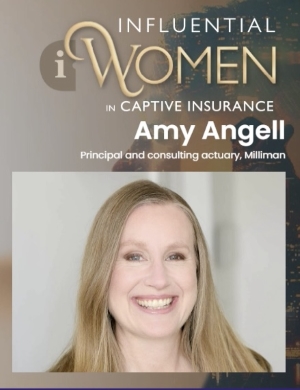

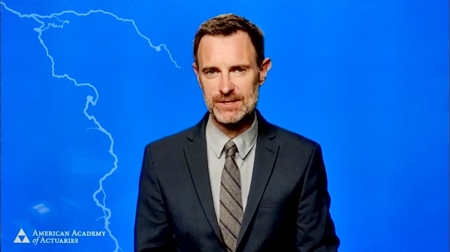

 Phone: 202-223-8196
Phone: 202-223-8196